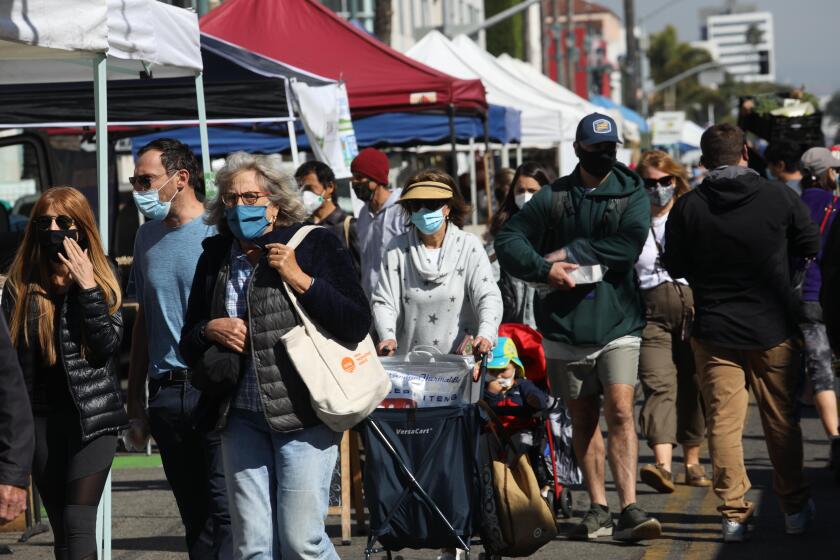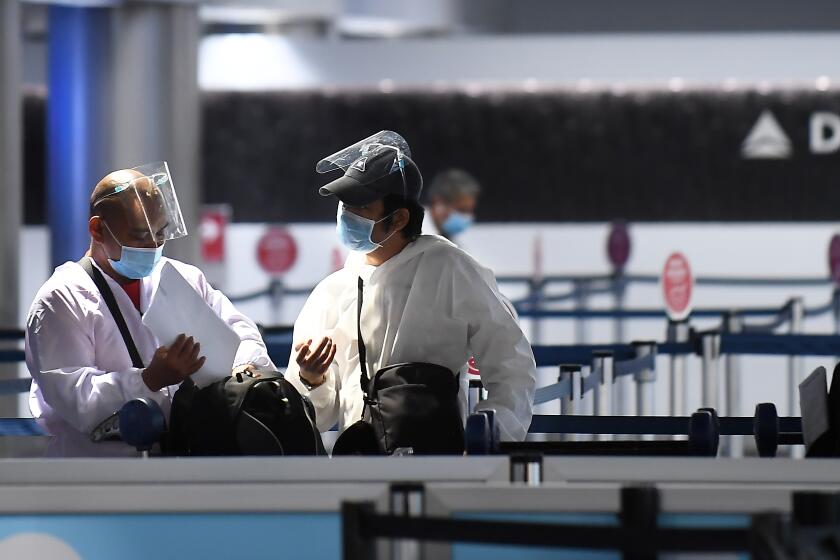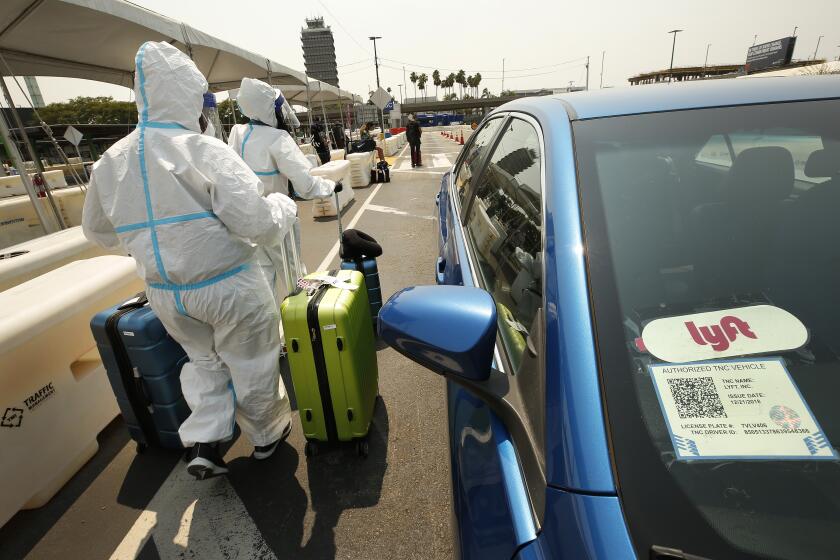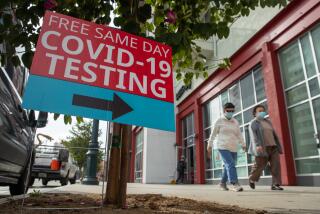Young people are spreading coronavirus in L.A., but older and sicker suffer the most
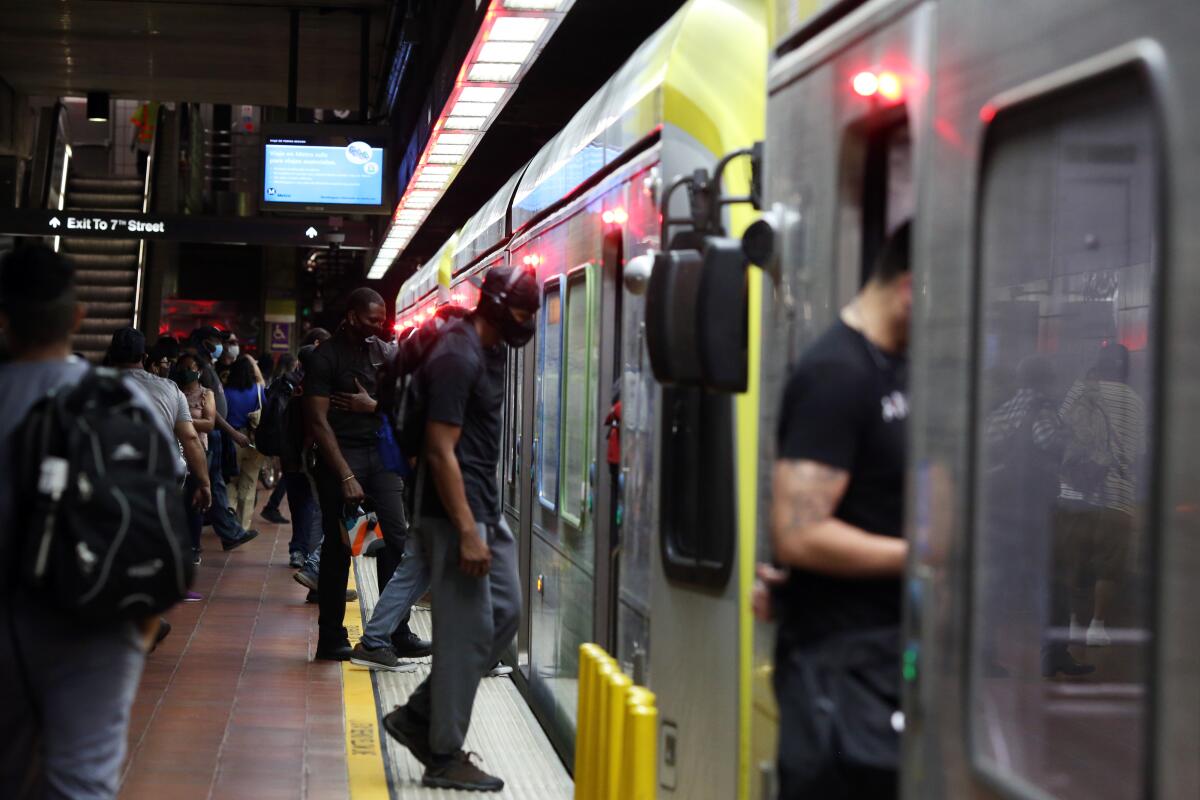
Coronavirus is again surging in Los Angeles County, and that has prompted calls for people to stay home as much as possible and led to discussions about a possible curfew or additional restrictions on businesses.
The disease is spiking across the county, affecting all age groups, but some remain most vulnerable. While the age of COVID-19 patients has declined, older people are still dying at very high rates from the illness.
Communities of color also remain hard hit, as do people with underlying health problems.
And young people gathering with those outside their households remains a major problem, officials say. The spread of the virus by young adults is resulting in the deaths of L.A. County’s elderly, according to Barbara Ferrer, the county’s public health director. People 80 and older are seeing significant increases in serious illness.
“This is most unfortunate, and it serves as a stark reminder that young people are spreading the virus with disastrous results for our elderly,” Ferrer said.
“To say many lives are at stake is not an exaggeration.”
Officials are sounding the alarm about the rapid spread of the coronavirus and have warned that more restrictions could come, even a possible curfew.
L.A. County’s adjusted coronavirus case rate has nearly doubled, from 7.6 new cases per 100,000 residents last week to 13.7 new cases per 100,000 residents this week.
And the rate at which coronavirus tests is increasing is substantially up, now at 5.3% compared to 3.8% last week.
“Given our recent huge increases in daily cases, and now in hospitalizations, it is clear that L.A. County is at a very dangerous point in the pandemic,” Ferrer said.
Officials said groups of young adults going to get tested on a Thursday in hopes of getting negative results by Saturday morning and then having a dinner party Saturday night are irresponsible.
Such tests provide a false sense of security — and engaging in this practice can still result in the gathering becoming a super-spreading event that can transmit the highly contagious virus widely.
“It’s a false narrative,” Ferrer said. “Your test result that you got Saturday morning was from Thursday when you got tested, and it said, ‘On Thursday, you were negative.’ It says nothing about whether you’re still negative on Saturday.
“I do want people to understand that testing on Thursday so you can party on Saturday: That doesn’t work. It’s not a good idea. It’s not effective, and you really are in some ways wasting a valuable resource,” Ferrer said.
Tests can provide misleading results, officials warn. If a person is tested shortly after becoming infected but before the virus has reproduced enough copies of itself, a test could fail to detect the virus and produce a false negative. In addition, a large percentage of people can get infected with the virus and be highly contagious but never show symptoms of illness.
Weekly coronavirus cases have doubled in the last month around California. Officials are trying to slow this latest spike while minimizing further business closures.
As the latest wave of the virus spreads across California, which on Monday recorded a single-day record for new cases, the number of patients in hospitals statewide is also increasing. For the seven-day period that ended Sunday, hospitalizations had increased 51%. And a sample of patients shows how common underlying health conditions can contribute to greater risk of hospitalizations from COVID-19.
In L.A. County, 93% of those who die from the disease have underlying health conditions. Among 198 people hospitalized between April and October, 54% had high blood pressure; 47% had diabetes; 35% were obese; 34% had high cholesterol; 15% had kidney disease; and 14% had chronic lung disease. Many people have multiple underlying health conditions.
Some of these underlying health conditions are quite common in L.A. County, health officials said. Of the area’s 10.1 million residents, about 2 million have high blood pressure; more than 2 million have high cholesterol; and more than 2 million are obese, Ferrer said.
And as the virus spreads, Pacific Islander, Latino and Black residents in Los Angeles County still face far higher rates of hospitalizations compared with white residents.
“And while we’ve made significant progress narrowing the gaps over the past few months, as cases surge, we may again see higher rates of disproportionality,” Ferrer said.
Airports, train stations and rest stops are places where people are at risk of being exposed to the virus, and it can be difficult to stay six feet away from others, as health experts strongly recommend.
Here are some tips for how to handle the surge:1) Everyone — especially those at highest risk — should avoid going out whenever possible
Officials have been sounding the alarm in recent days about the rapid spread of the virus in the region and have warned that more restrictions could be coming. Los Angeles Mayor Eric Garcetti went a step further Monday by saying remaining at home when possible is essential in slowing the outbreak.
“We must stay at home as much as possible for the next two to three weeks, except for accessing essential services, food and outdoor exercise,” he said.
Ferrer suggested using delivery services for groceries and medicine and said, “If this isn’t possible, assign one person from your household to take care of errands and shopping to limit exposure.”
2) If you live with older people or those with serious health conditions, wear masks and keep your distance
“Higher-risk household members should try when possible to eat by themselves, and particularly avoid being in close contact with other people who are having possible exposures at their jobs or in the community,” Ferrer said.
3) If you test positive or are a close contact of someone who did, isolate or quarantine
Health experts recommend isolating for 10 days if you test positive. During that time, stay inside as much as possible, avoid contact with people outside your home and order food and groceries by no-contact delivery.
People who have engaged in risky activities, such as being in a crowd where people aren’t wearing masks or keeping their distance from one another, should quarantine for 14 days, Ferrer said. The same protocols should be followed as during isolation.
4) Businesses should make sure people are wearing masks and distancing from one another at work
“Make sure there are no crowded places or spaces at your site, and limit occupancy to make sure that everyone can always be distant by at least six feet,” Ferrer said. “Allow as many employees as possible to work from home as much as possible.”
The public health department should be notified if there have been three or more coronavirus cases within 14 days at the work site. L.A. County’s public health department can be contacted at (888) 700-9995 during regular business hours.
More to Read
Sign up for Essential California
The most important California stories and recommendations in your inbox every morning.
You may occasionally receive promotional content from the Los Angeles Times.
